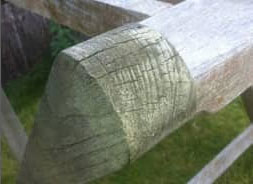Bench Ageing | Bench Silvering | End Grain Movement



When your new Garden Bench is delivered, it will be fine sanded and light brown in colour. After a few months of your Garden Bench being left outdoors, the process of oxidisation (nature’s way of protecting the timber) will begin. The colour of your Garden Bench will start to fade from light brown to a pale white and then finally to a graceful silver. The time scale for this process will vary from bench to bench and the environment in which your Bench is situated. This is perfectly normal behaviour
for what is essentially a natural product and will not affect the strength, performance or life expectancy of your Garden Bench. The pictures below show what is known as Fine Line or End Grain Movement. conditions then swell slightly, and to the same extent it will also dry out in warmer climates. The sections of timber that are most susceptible are the end sections or 'end grains' of the timber. When any wooden furniture is left outside, it will naturally absorb
moisture from the atmosphere during damp predominantly around the frames and arms of the benches where they have been cut and show the growth rings. These periodic cracks are perfectly normal as the wood breathes and reacts to variations in the moisture content of the air. Movement on the end grain sections usually happens early in the life of the furniture as the timber settles into its new climate that may well be very different to that of its native country.


Click on the video below to see how to quickly clean a Garden Bench that has algae, lichen and general build up of dirt over the years
We have been manufacturing & supplying high quality garden benches in the UK for 20 years

















